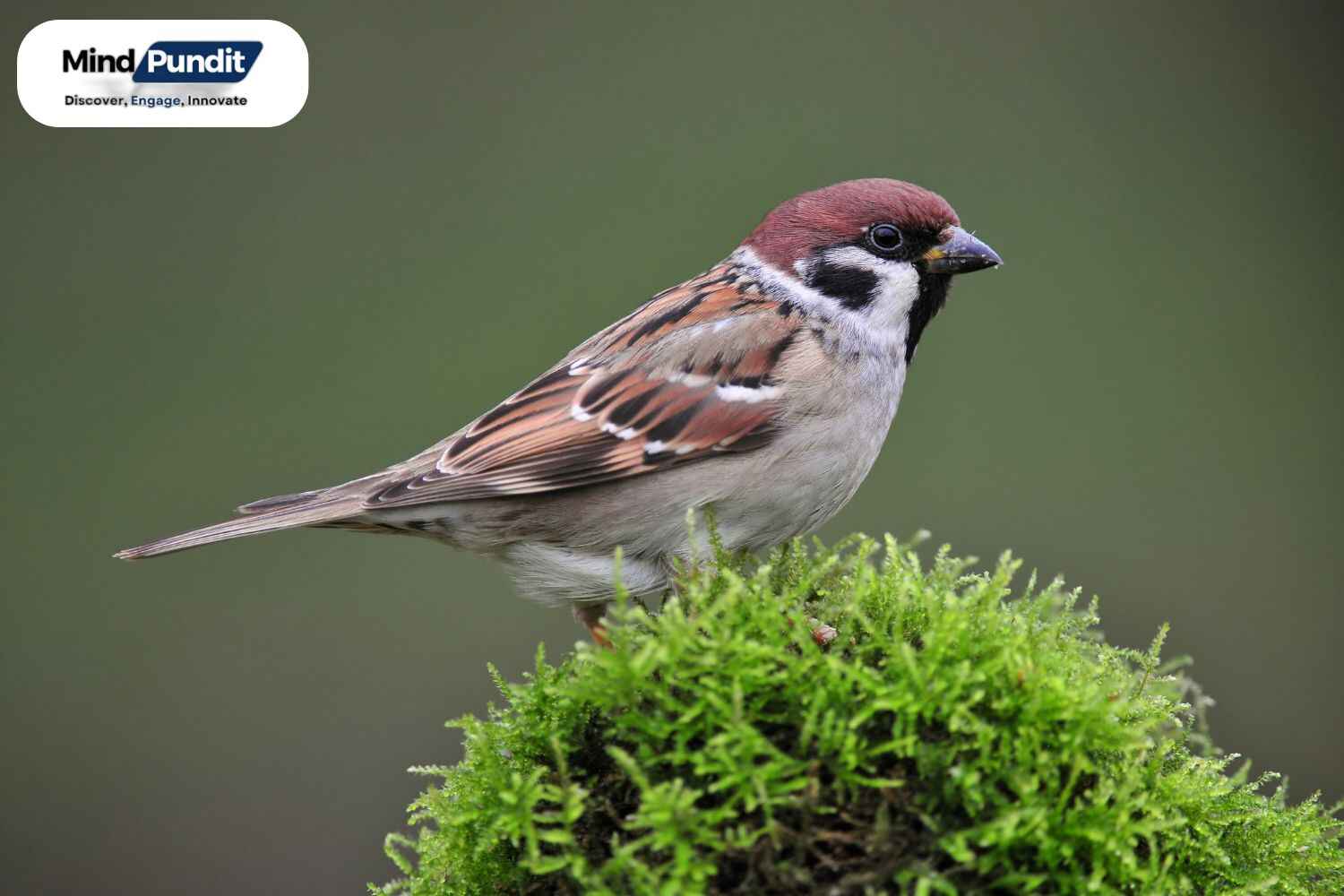
What Does A Sparrow Look Like?
What does a sparrow look like? What appearance do they have? Little passerine birds, or sparrows, are distinguished by their inconspicuous and compact appearance. Depending on the particular species, their appearance can vary slightly, however, the common house sparrow (Passer domesticus) is described below as a guide:
Appearance of Sparrows: What Does A Sparrow Look Like?
What does a sparrow look like? The usual length of a house sparrow is 5.5 to 6.3 inches (14 to 16 centimeters), and its wingspan is roughly 7.5 to 9.1 inches (19 to 23 centimeters). Their body is stocky and fat, and their tail is comparatively short. The traits that set sparrows apart the most are as follows:
Color: Male house sparrows are distinguished by their vivid and colorful feathers, which include a grayish crown, white cheeks and underparts, and a chestnut-brown back. A little black patch on their chin and a black throat “bib” are also present. Their plumage brightens significantly more in the breeding season. On the other hand, female house sparrows tend to be less colorful and duller than their male counterparts.
Beak: Sparrows are equipped to crack seeds with their short, conical beaks. Usually, the beak has a dark hue.
Eyes: Considering their head size, their eyes are small and black.
Wings: Sparrows can fly quickly and agilely due to their round wings. Usually, the wings have light lines and are brown.
Legs and Feet: They have strong, somewhat small legs that can be used for hopping and perching. The feet are designed to hold onto ledges and trees.
Tail: A sparrow has a short, square-off tail covered with brown feathers.
Size: Sparrows are easily distinguished from larger birds due to their modest size.
Sparrows are members of the Passeridae family of birds, which is quite diverse and has many species worldwide, each with distinctive traits. Although the house sparrow is the main subject of the description above, other species may differ in size, color, and pattern. All the same, one of the most identifiable and commonly seen birds in cities and suburbs is the common house sparrow.
How Big Are Sparrows?
Sparrows are small birds in general, and the size of each species can vary significantly. But we can measure the average size of a sparrow as follows:
Length: From the tips of their beaks to the ends of their tails, sparrows usually range from 4.3 to 7.9 inches (11 to 20 cm).
Wingspan: Their wingspan is roughly between 6.7 and 9.8 inches (17 and 25 cm). Because of their round shape and relative shortness, the wings enable quick flying.
Weight: Sparrows are light birds, weighing between 0.4 and 1.2 ounces (12 to 34 grams) for the majority of species. Age, sex, and diet are a few variables that may affect their weight.
The world is home to many different kinds of sparrows, and although they all have some traits in common, these species might differ in size. While specific dimensions may vary slightly for other species within the Passeridae family of sparrows, the measurements given below are typically appropriate to many sparrows, including the common house sparrow. That being said, sparrows are distinguished from larger bird species by their diminutive stature and compact nature.
What Color Are Sparrows?
While they are present in a variety of hues, sparrows are best in their subtle, cryptic plumage, which helps them blend in with their surroundings. The species of sparrow as well as the age and sex of the bird can all affect its particular hue. The following are typical patterns of colors for sparrows:
Brown and Gray: The plumage of many sparrows, such as the house sparrow, is colored in shades of brown and gray. Usually brown with mottling on the back and wings, sparrows mix in well with grassy and shrubby habitats.
White: The throat, belly, and vent area of sparrows are frequently covered with white or light underparts. Species differences exist in the amount of white on the underparts.
Black Markings: The faces and necks of certain sparrows bear noticeable black markings. The male house sparrow, for instance, has a little black patch on its chin and a black throat “bib”. It is during the breeding season that these black marks become more noticeable.
Chestnut or Rufous: Some species, like the American tree sparrow, have markings on their heads or crowns.
Orange or Yellow: Certain sparrows, such as the Savannah sparrow, have streaks or patches of orange or yellow on their breast, cap, or cheek.
Green or Olive: Some species, such as the green-tailed towhee, have patches of green or olive-colored feathers.
Blue: During the breeding season, we can distinguish the male indigo bunting by its vivid blue plumage.
Gray or Blue-Gray: The head markings of certain species, such as the white-crowned sparrow are either gray or blue-gray.
What does a sparrow look like? Sparrows are a varied group of species, and there are big differences in coloration amongst them. Furthermore, compared to their male counterparts, female sparrows of many species typically have more muted and cryptic plumage. Sparrows benefit from these subdued hues because they frequently live in grasslands, shrublands, and urban areas where they must blend in with their surroundings to survive.
Read more: EFFECTS OF OCEAN WATER ON HAIR HEALTH





